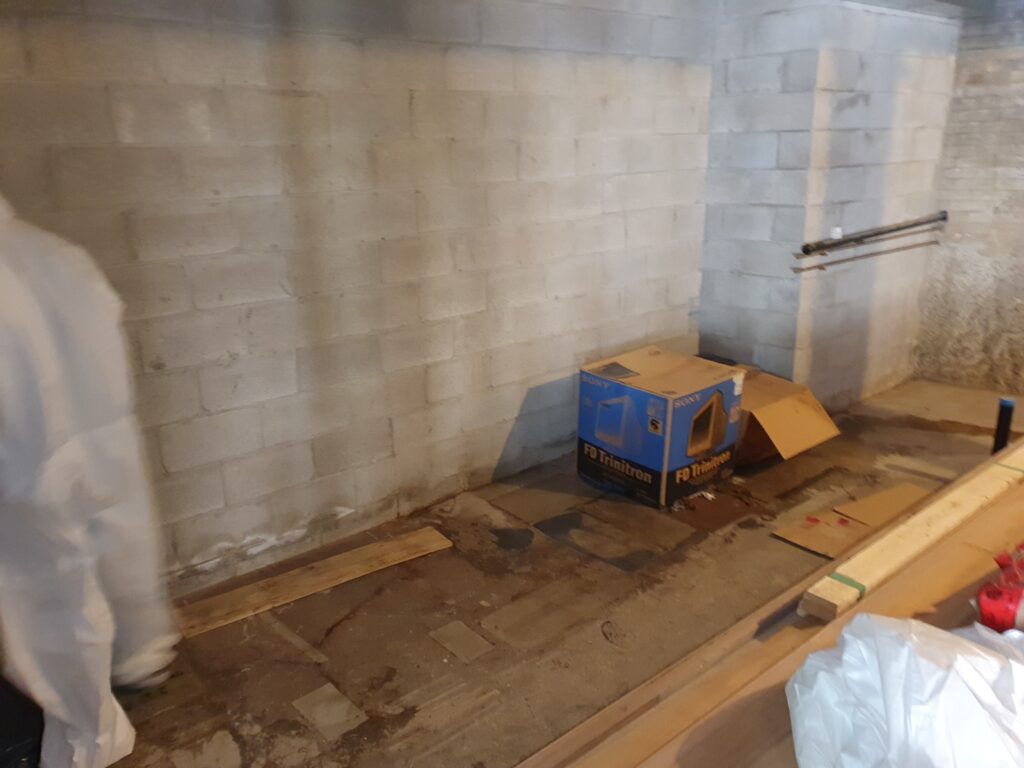Natural disasters can leave behind a trail of devastation, affecting homes, businesses, and entire communities. Post-disaster reconstruction is a critical process aimed at restoring normalcy and rebuilding affected areas. Utilizing professional damage restoration services is essential to ensure a thorough and effective recovery. This blog will provide a comprehensive guide to post-disaster reconstruction, emphasizing the importance of damage restoration services and detailing the steps involved in the reconstruction process.
Understanding Post-Disaster Reconstruction
Post-disaster reconstruction refers to the process of rebuilding and restoring structures, infrastructure, and services after a disaster such as a hurricane, flood, earthquake, or fire. The goal is not only to repair physical damage but also to create a safer and more resilient environment to withstand future disasters.

The Role of Damage Restoration Services
Damage restoration services play a pivotal role in the post-disaster reconstruction process. These specialized services address various types of damage, including water, fire, mold, and structural damage, using advanced techniques and equipment to restore properties efficiently and safely.
Key benefits of professional damage restoration services include:
- Expert Assessment: Professionals conduct thorough inspections to assess the extent of damage and develop a comprehensive reconstruction plan.
- Safety Compliance: Restoration experts adhere to safety standards and regulations, ensuring that the reconstruction process does not pose additional risks.
- Advanced Equipment: Specialized tools and equipment enable efficient cleanup, drying, and restoration, minimizing further damage and reducing recovery time.
- Insurance Assistance: Restoration companies often assist with the insurance claims process, helping property owners navigate complex documentation and procedures.
Steps in the Post-Disaster Reconstruction Process
The post-disaster reconstruction process involves several critical steps, each aimed at ensuring a complete and effective recovery. Here’s an in-depth look at the typical steps involved:
- Initial Assessment and Planning
- Damage Assessment: Restoration professionals inspect the property to determine the extent of damage and identify hazards.
- Reconstruction Plan: A detailed reconstruction plan is developed, outlining the scope of work, materials needed, and estimated timelines.
- Securing the Property
- Temporary Repairs: Immediate repairs, such as boarding up windows or covering roofs with tarps, are made to prevent further damage.
- Safety Measures: Hazards such as electrical issues, structural weaknesses, and contaminated water are addressed to ensure a safe environment for workers and occupants.
- Cleanup and Debris Removal
- Debris Clearance: Debris, fallen trees, and damaged materials are removed from the property.
- Water Extraction and Drying: Industrial-grade dehumidifiers and air movers are used to extract water and dry affected areas, preventing mold growth and further structural damage.
- Mold Remediation and Decontamination
- Mold Removal: If mold is detected, specialized mold remediation techniques are employed to remove it and prevent future growth.
- Sanitization: Affected areas are thoroughly cleaned and sanitized to eliminate contaminants and ensure a healthy environment.
- Structural Repairs and Reconstruction
- Building Repairs: Damaged structures such as walls, roofs, and foundations are repaired or rebuilt.
- Electrical and Plumbing Systems: Electrical wiring, plumbing, and HVAC systems are inspected and repaired or replaced as needed.
- Finishing Touches: Final touches such as painting, flooring, and installing fixtures are completed to restore the property to its pre-disaster condition.
- Final Inspection and Quality Assurance
- Inspection: A final inspection is conducted to ensure that all repairs meet safety and quality standards.
- Client Approval: Property owners review the completed work to ensure satisfaction with the reconstruction efforts.
Preventative Measures and Future Preparedness
Once the post-disaster reconstruction is complete, it’s crucial to implement preventative measures to enhance the property’s resilience against future disasters. Here are some effective strategies:
- Structural Reinforcements: Strengthening building structures to withstand future natural disasters, such as installing storm shutters or reinforcing foundations.
- Drainage Systems: Improving drainage systems to prevent flooding and water damage.
- Emergency Preparedness Plans: Developing and regularly updating emergency preparedness plans to ensure quick and effective responses to future disasters.
- Regular Maintenance: Conducting regular maintenance and inspections to identify and address potential vulnerabilities.
FAQs About Post-Disaster Reconstruction
What are damage restoration services?
Damage restoration services are professional services that address various types of property damage caused by natural disasters, including water, fire, mold, and structural damage, to restore properties to their pre-disaster condition.
How long does the post-disaster reconstruction process take?
The duration of the reconstruction process depends on the extent of the damage and the scope of work involved. It can range from a few weeks to several months.
Will my insurance cover post-disaster reconstruction?
Most homeowner’s insurance policies cover the costs of post-disaster reconstruction, but it’s important to review your policy and work with your insurance provider and restoration company to understand the coverage and claims process.
Can I start the reconstruction process before my insurance claim is approved?
While some emergency repairs can begin immediately to prevent further damage, it’s advisable to coordinate with your insurance company before starting major reconstruction work to ensure coverage.
How can I ensure the quality of reconstruction work?
Hiring reputable and experienced damage restoration services ensures high-quality work. Additionally, conducting regular inspections and staying involved in the reconstruction process can help maintain standards.
Conclusion
Post-disaster reconstruction is a vital process that requires careful planning, expertise, and the right resources. Utilizing professional damage restoration services ensures a thorough and effective recovery, restoring properties to their pre-disaster condition and enhancing resilience against future disasters. By understanding the reconstruction process and taking preventative measures, property owners can rebuild stronger and safer, ready to face any future challenges.

Recent Comments